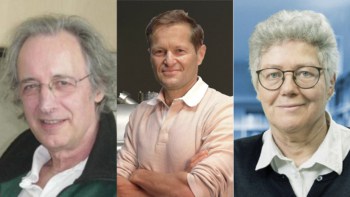Physicists in France have demonstrated the Hall effect with phonons - vibrations of a crystal lattice - for the first time. The effect shows up as a temperature difference across a sample when a heat current is passed along the sample and a magnetic field is applied at right angles to both these directions (Phys. Rev. Lett. 95 155901).

The classic Hall effect occurs when an electric current flows through a conductor in a magnetic field. If the current and magnetic field are at right angles to each other, the Lorentz force deflects the electrons to one side and a Hall voltage builds up in the direction that is at right angles to both the current and the magnetic field. It has been assumed that the Hall effect could not exist for phonons because they are not charged.
In 1996, however, Geert Rikken of the Grenoble High Magnetic Field Laboratory (GHMFL) and Bart van Tiggelen of the Université Joseph Fourier, also in Grenoble, observed a Hall effect with photons. Now, Rikken, Cornelius Strohm and Peter Wyder, who are both based at the GHFML, have seen the effect with phonons. Inspired by the photon Hall effect, they argued that the way certain phonon modes coupled to an external magnetic field should mean that phonon scattering depended on the direction the phonons were moving in. This, in turn, should lead to heat flow in a direction at right angles to the magnetic field and an applied heat flow.
To look for this effect, they passed a heat current through a crystal of terbium gallium garnet – a paramagnetic material that is often used in magneto-optical devices – and applied a magnetic field at right angles to this current. When they measured the temperature in a third direction they found differences of up to 200 microkelvin. Moreover, this temperature difference vanished when the heat current and the magnetic field were parallel (see figure).
“We have observed a phenomenon that was believed to be non-existent,” says Rikken, who is based at the LNCMP magnetic field lab in Toulouse, “and we have shown that phonons in a magnetic field behave like photons.”



